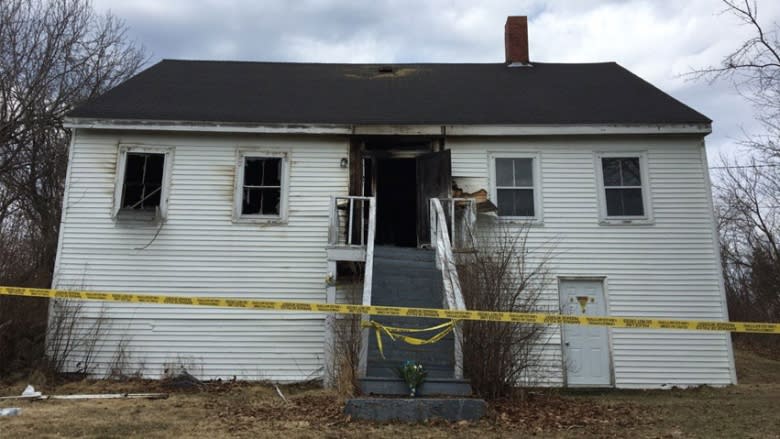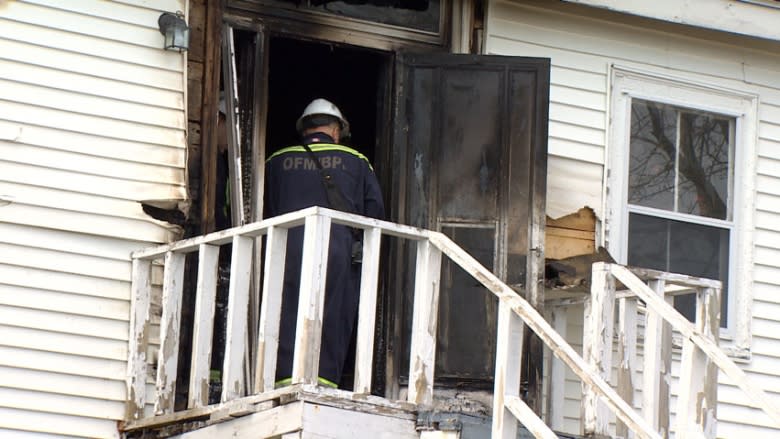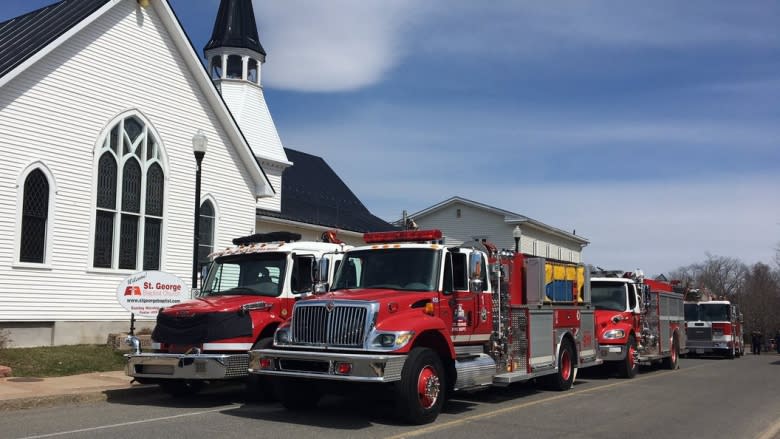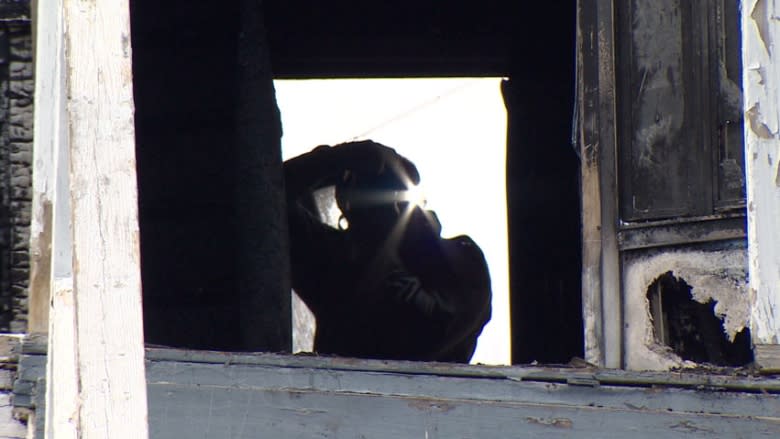'Poor electrical housekeeping' cited in fire deaths of St. George family
A "tremendous" number of scattered extension cords, power bars and wires, along with the failure of an electrical component, were the "plausible" cause of a house fire that killed a St. George family this year, an investigator says.
Firefighters answering a call on April 11 found 80-year-old Esther Boyd and her three adult sons dead of smoke inhalation inside their South Street house.
The fire was not considered suspicious, but its cause wasn't known at the time.
In a fire investigation report released this week, chief investigator Jeff Cross said he suspects the failure of some type of electrical component.
"Although there was not a specific source of ignition identified, it is my opinion that the poor electrical housekeeping contributed to this fatal fire," said Cross, chief investigator with the provincial fire investigation unit.
Beloved and respected
The deaths of the St. George family shook the tight-knit community of about 1,500 people.
Esther Boyd had taken care of her three sons, William, 59, David, 55, and Robert, 52, since her husband died more than 30 years ago.
"She did have a lot of challenges, you know, a lot in her home to deal with, and she never complained. You would never know it," resident Mary Leigh LeBlanc said after the fire.
Boyd's son David was especially popular around town, and firefighters had made him an honorary member of the St. George department.
The morning of the fire, David stood in uniform, beaming with pride, beside three firefighters during the unveiling of the southwestern New Brunswick town's new fire truck.
Cross wrote that the St. George department broke for lunch after the ceremony, around 11:40 a.m., and Boyd walked home.
Shortly after, around 12:25 p.m., firefighters were called to the fire at 25 South St.
When they arrived, heavy smoke was coming from the home, and there were flames inside the front door and a room to the left of it.
The firefighters, who knew all the family members were at home, started fighting the flames immediately, the report said.
'Extreme heat'
A statement from RCMP Const. Malcolm McKeown said neighbours spotted the fire after they noticed smoke coming from the chimney and gable vent of the Boyd home. They called 911.
The report said firefighters forced their way inside the house a couple of minutes later and advanced a hose line upstairs, where they encountered "extreme heat and [a] small amount of fire outside the front, right bedroom."
In the room, they found the body of a family member on a bed.
The firefighters weren't able to remove the body until flames were suppressed at the front of the house, a member of the Blacks Harbour Fire Department said in the report.
In the meantime, crews discovered the three other family members in the kitchen.
One was in the middle of the floor, another beside the old-fashioned stove, and a third in a chair on the far side of the room.
"The three found in the kitchen were immediately removed to the outside, where efforts were made to revive them unsuccessfully," the report said.
No one else was found in a search of the house.
Fire department grieves
Hundreds of people attended a memorial service for the Boyds, with the new fire truck, now bearing David Boyd's name, sitting outside the church during the service.
In the days after the fire, the St. George firefighters stopped taking calls, grieving the loss of the family and one of their own. Departments in nearby communities responded to calls instead.
"I will remember them all — Esther for her courage and perseverance in keeping the family together and providing for the boys," said Bill Pilkington, a neighbour for 36 years. "And the boys, they were all incredible individuals."
Hypothesis on cause
After the victims were removed from the house, Cross said, he started photographing the outside and concluded "the fire had not started at the exterior."
Several other fire investigators arrived during and after the fire. A team was established and made sure the home was safe to enter, then walked through to take photos and assess the damage "from least to most," Cross said.
The room at the front of the home "was identified as the area of origin," he wrote.
"It was observed that there were many extension cords, power bars and power blocks plugged into one another and running to various areas of the room and beyond into other rooms."
Cross concluded the failure of an electrical component in the area of origin was a plausible explanation for what happened.
"The home was considered to be very cluttered and disorganized with extension cords and electronic devices scattered about," he said.
The source of ignition was never found, "but with the amount of electrical potential within the area, and the amount of damage, the ignition source may have been consumed."





